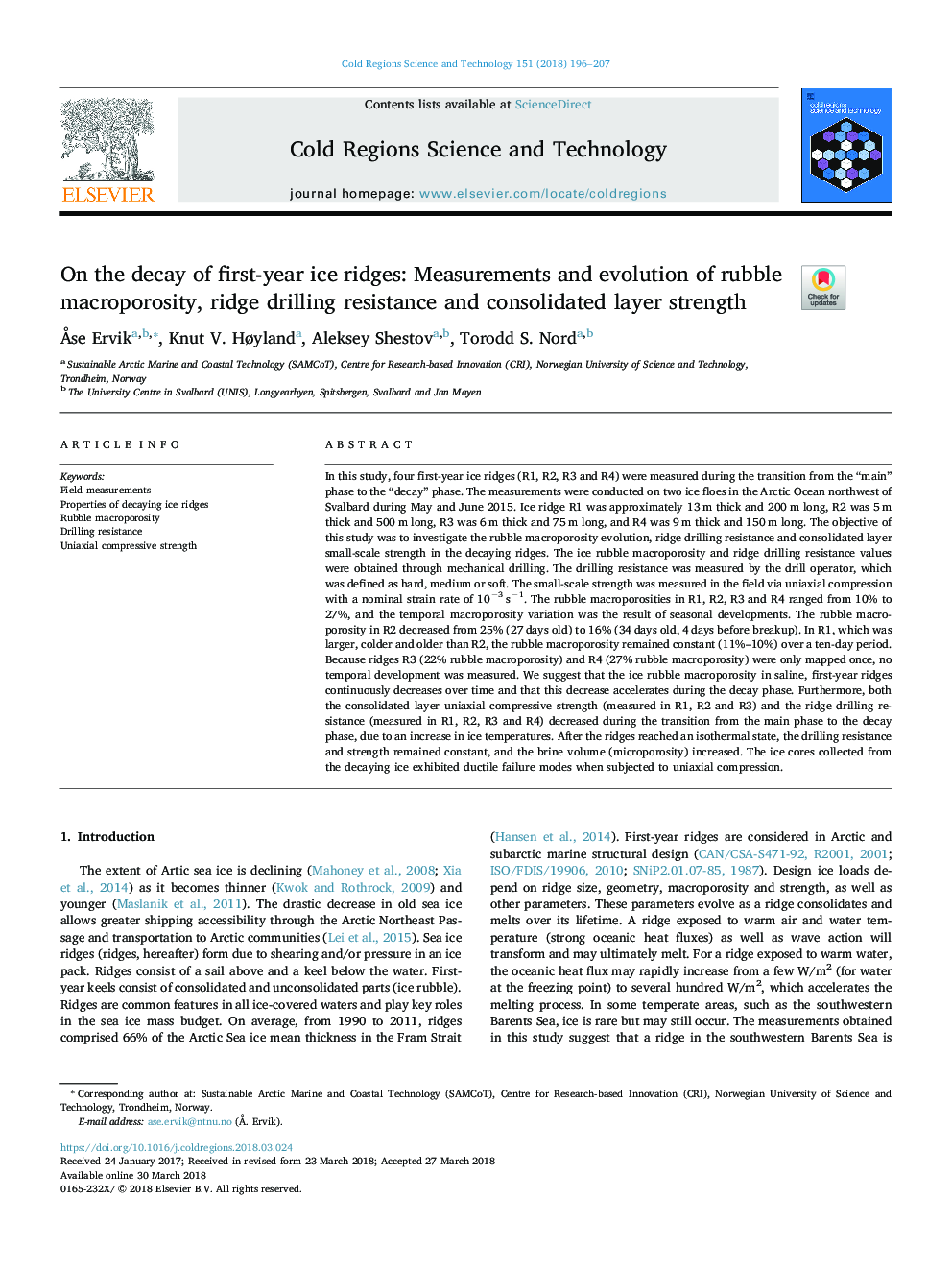| Article ID | Journal | Published Year | Pages | File Type |
|---|---|---|---|---|
| 8906481 | Cold Regions Science and Technology | 2018 | 12 Pages |
Abstract
In this study, four first-year ice ridges (R1, R2, R3 and R4) were measured during the transition from the “main” phase to the “decay” phase. The measurements were conducted on two ice floes in the Arctic Ocean northwest of Svalbard during May and June 2015. Ice ridge R1 was approximately 13â¯m thick and 200â¯m long, R2 was 5â¯m thick and 500â¯m long, R3 was 6â¯m thick and 75â¯m long, and R4 was 9â¯m thick and 150â¯m long. The objective of this study was to investigate the rubble macroporosity evolution, ridge drilling resistance and consolidated layer small-scale strength in the decaying ridges. The ice rubble macroporosity and ridge drilling resistance values were obtained through mechanical drilling. The drilling resistance was measured by the drill operator, which was defined as hard, medium or soft. The small-scale strength was measured in the field via uniaxial compression with a nominal strain rate of 10â3â¯sâ1. The rubble macroporosities in R1, R2, R3 and R4 ranged from 10% to 27%, and the temporal macroporosity variation was the result of seasonal developments. The rubble macroporosity in R2 decreased from 25% (27â¯days old) to 16% (34â¯days old, 4â¯days before breakup). In R1, which was larger, colder and older than R2, the rubble macroporosity remained constant (11%-10%) over a ten-day period. Because ridges R3 (22% rubble macroporosity) and R4 (27% rubble macroporosity) were only mapped once, no temporal development was measured. We suggest that the ice rubble macroporosity in saline, first-year ridges continuously decreases over time and that this decrease accelerates during the decay phase. Furthermore, both the consolidated layer uniaxial compressive strength (measured in R1, R2 and R3) and the ridge drilling resistance (measured in R1, R2, R3 and R4) decreased during the transition from the main phase to the decay phase, due to an increase in ice temperatures. After the ridges reached an isothermal state, the drilling resistance and strength remained constant, and the brine volume (microporosity) increased. The ice cores collected from the decaying ice exhibited ductile failure modes when subjected to uniaxial compression.
Related Topics
Physical Sciences and Engineering
Earth and Planetary Sciences
Earth and Planetary Sciences (General)
Authors
Ã
se Ervik, Knut V. Høyland, Aleksey Shestov, Torodd S. Nord,
